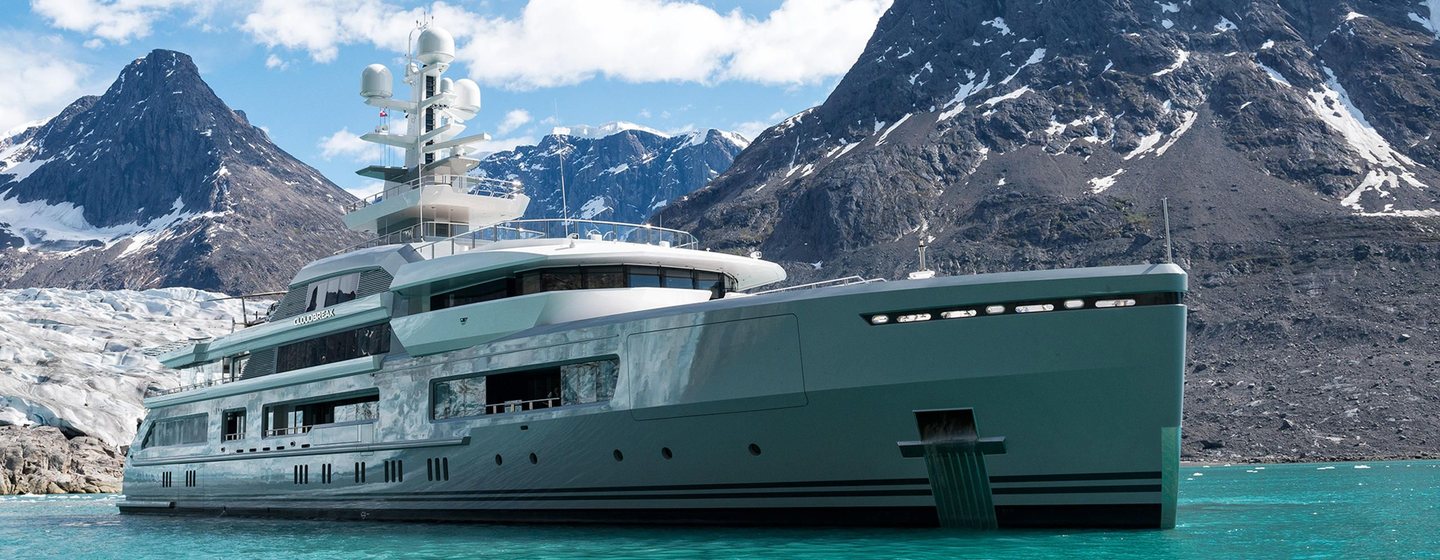An explorer or expedition yacht offers its owner the liberty to traverse the world's oceans, navigating to any destination of their choosing. In broad terms, an explorer yacht is a vessel purposefully constructed or converted for extended voyages into remote regions.
An expedition yacht, also known as an explorer yacht, is a purpose-built or converted vessel designed for long-range, self-sufficient cruising in remote and challenging environments. Unlike standard luxury yachts that prioritize speed and leisure, expedition yachts are engineered for endurance, safety, and autonomy — often with the structural capability to navigate polar regions, cross oceans, and remain off-grid for 30+ days.
Key Characteristics:
- Long-Range Fuel Capacity: 5,000+ nautical miles at low cruising speeds.
- Full-Displacement Hull: Ensures maximum stability in rough seas.
- Ice-Class Rating (Optional): Reinforced hulls for polar operations.
- High Autonomy: Supports extended voyages without port calls.
- Heavy-Duty Systems: Commercial-grade propulsion and navigation.
- Utility-Oriented Design: Space for tenders, toys, helicopters, and scientific equipment.
Primary Use Cases:
- Arctic/Antarctic expeditions
- Remote island exploration
- Global circumnavigation
- Adventure chartering and research missions
As you can see, an expedition yacht blends rugged capability with luxury amenities, offering owners and crew the freedom to explore any ocean, in any season, under nearly any conditions.
Must-Have Attributes of an Expedition Yacht
| Attribute | Definition |
|---|---|
| Long-Range Fuel Capacity | Ability to travel 5,000–10,000+ nautical miles without refueling, enabling transoceanic or polar expeditions. |
| Full Displacement Hull | Deep, stable hull design that maximizes fuel efficiency and endurance in rough seas. |
| Ice-Class Reinforcement | Hull built to Polar Code standards (e.g., PC6 or Polar Class B) to allow navigation in icy regions. |
| Heavy-Duty Propulsion | Robust diesel or hybrid engine systems capable of sustained low-speed cruising and dynamic positioning. |
| High Autonomy | Systems onboard allow 30–40 days at sea without resupply, including watermakers, power generation, and storage. |
| Tender & Toy Capacity | Garage or deck space for RIBs, landing craft, helicopters, submersibles, and land vehicles. |
| Commercial-Grade Systems | Redundant navigation, power, and mechanical systems built to IMO or SOLAS standards for reliability and safety. |
| Provisions & Spare Storage | Large refrigerated and dry stores, plus spare parts storage for extended self-sufficiency. |
| Off-Grid Sustainability | Solar arrays, wind turbines, and waste management systems to support eco-conscious operation in remote regions. |
| Helideck or Heli-Hangar (optional) | Support for rotary aircraft to extend access in inaccessible regions; common on vessels 70m+. |
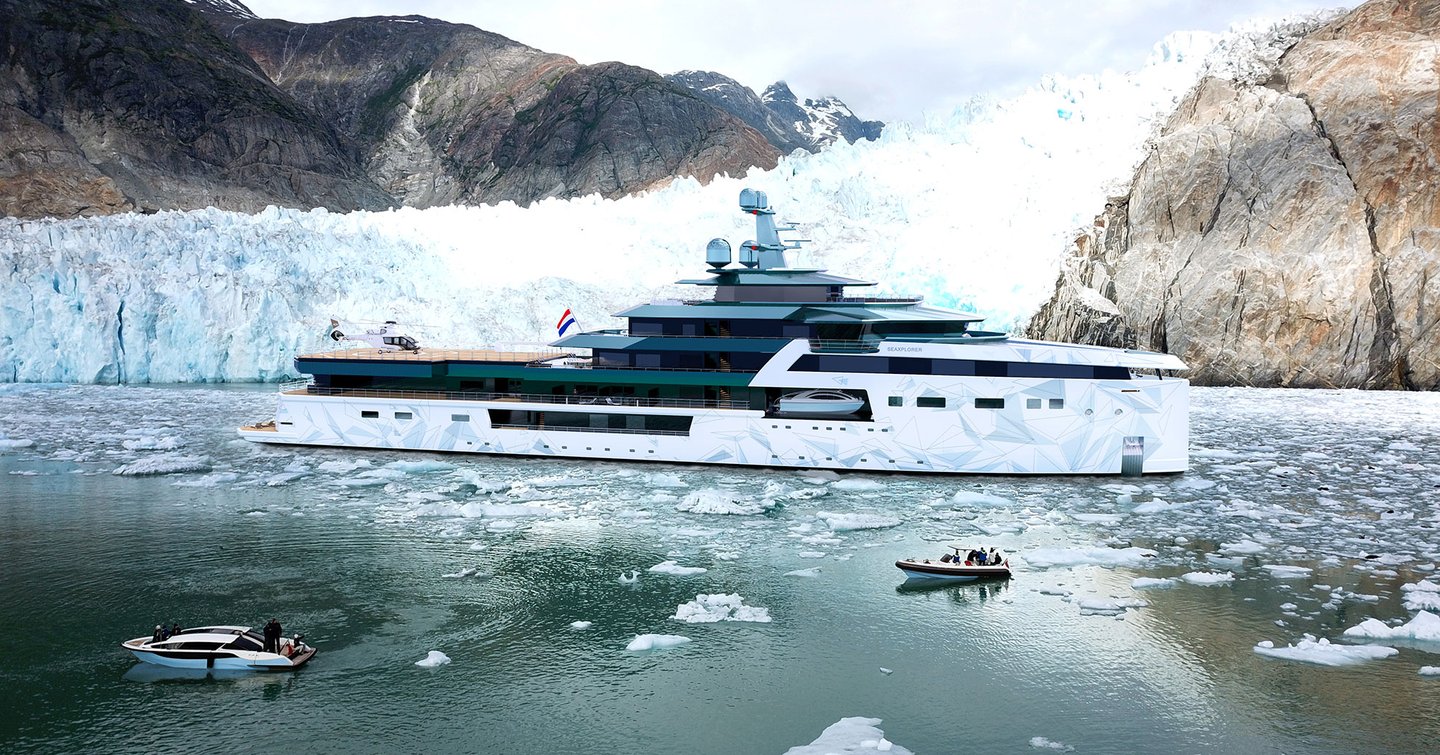
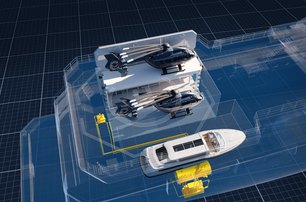
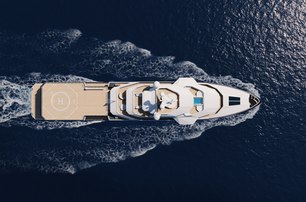
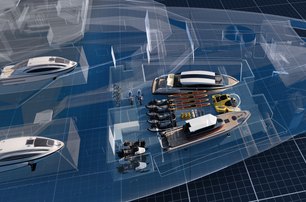
Expedition/Explorer Yacht Features
Hull Design Characteristics of Explorer Yachts
Above all, they must boast exceptional seaworthiness, capable of navigating the most turbulent seas. The hull design significantly influences seaworthiness and the comfort of both passengers and crew, so the majority of explorer-class yachts opt for a full displacement hull with a substantial draft.
Moreover, hull design must address ice conditions, leading to the development of vessels compliant with Polar Code B. This international code outlines stringent requirements for vessels operating in polar waters, particularly focusing on their ability to withstand ice impact and resultant flooding.
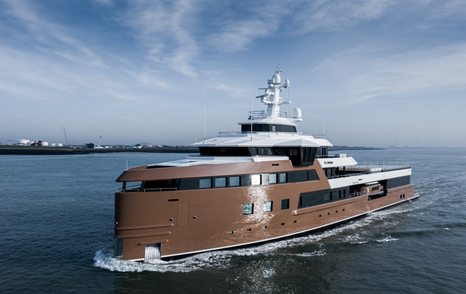
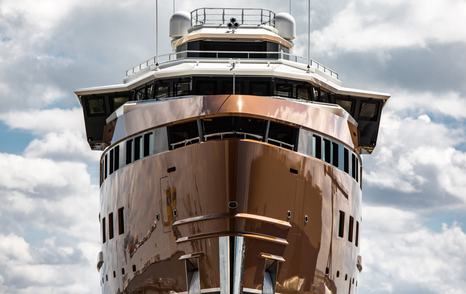
The Impressive Range: Expedition Yacht Core
An explorer yacht's fuel tank capacity is a critical factor for oceanic voyages, aiming for a minimum range of 5000nm at a speed of 10 knots. Given the extensive nautical miles these yachts cover annually, simplicity in maintenance becomes imperative. Long voyages through rough seas and harsh weather conditions can cause considerable wear and tear, necessitating easily conducted repairs and routine maintenance.
Independence and self-sufficiency are crucial aspects of authentic explorer yachts. Apart from possessing the technical specifications for long-distance travel, these vessels should be equipped to remain at sea for extended periods without docking. For instance, some true expedition yachts are capable of staying at sea for up to 40 days without refueling or restocking.
Explorer Yacht Provisions: Extreme Catering
Explorer yacht provisions cater to the distinct needs of travelers embarking on extended voyages and explorations. These provisions encompass various essentials that ensure self-sufficiency and comfort throughout prolonged journeys.
Among these provisions is the need for substantial storage space to house non-perishable food items, such as freeze-dried meals, canned goods, and vacuum-sealed products, addressing the limited availability of fresh provisions during extended trips.
Moreover, advanced water purification systems are integral to providing a continuous supply of potable water, often through the integration of desalination units that convert seawater into drinkable water.
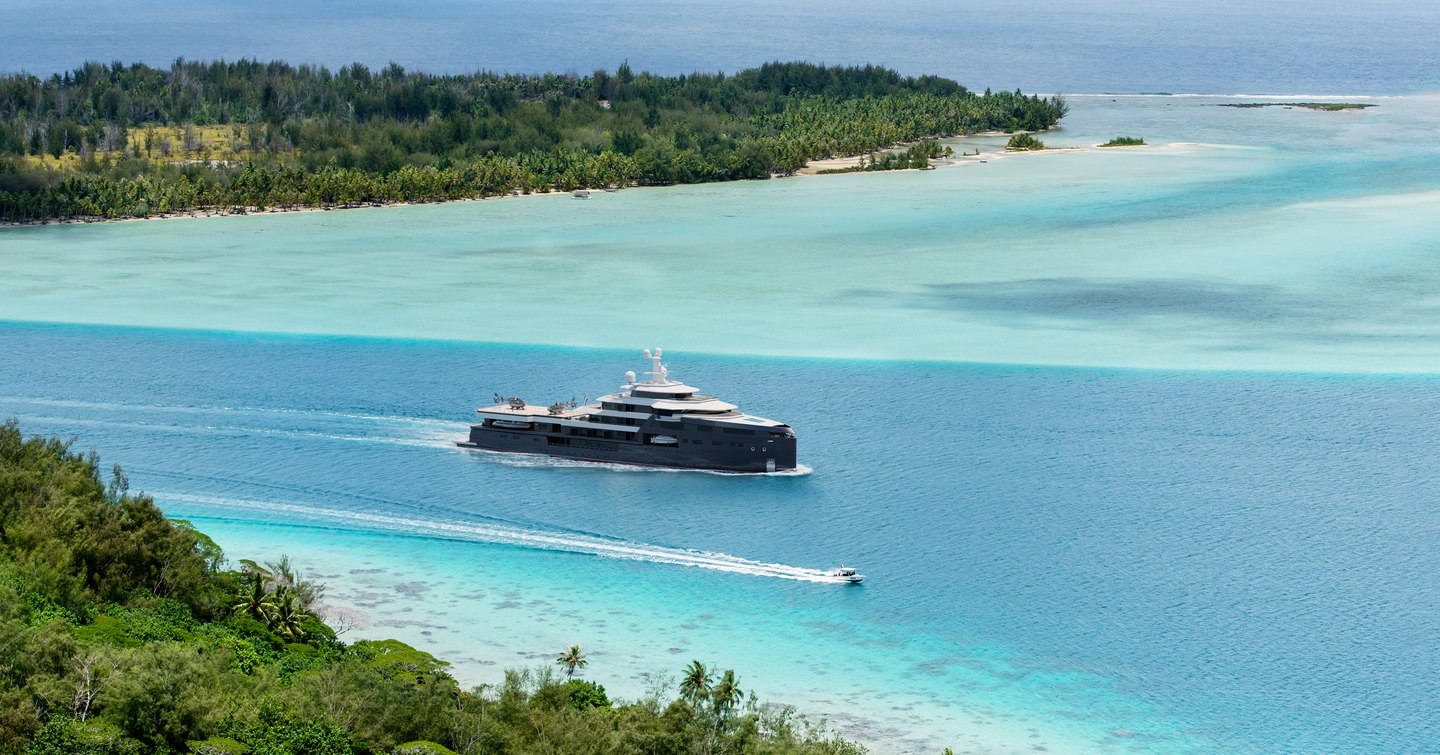
Expedition Yachts: Focus on Storage
Explorer yachts also necessitate designated storage areas for exploration equipment, including diving gear, kayaks, tenders, and tools essential for onshore excursions. Additionally, these vessels often feature increased fuel storage capacity to support longer journeys, sometimes complemented by advanced energy systems like solar panels or wind turbines to supplement power generation.
Safety equipment is paramount for these remote journeys, with comprehensive gear onboard such as first aid kits, life rafts, emergency beacons, and communication devices for use in emergencies.
Style and Design of Expedition and Explorer Yachts
Exterior of Explorer Yachts
An explorer yacht can take various forms. Some are designed with the appearance of a commercial vessel, while others appear like a regular yacht, combining the luxury of a superyacht with the go-anywhere capability of a true explorer vessel.
Examples of distinctive styling elements found on the more commercial-looking, explorer-styled vessels include a superstructure that is placed forward on the hull, with reversed bridge windows and high bows.
Making the Interior Count
Explorer yacht interiors are meticulously designed to balance durability, comfort, and functionality for extended voyages to remote destinations. These interiors often prioritize spacious and ergonomic layouts, offering comfortable living spaces, well-equipped kitchens, and durable furnishings capable of enduring rugged conditions.
The design incorporates high-quality materials that can withstand the challenges of long journeys, including sturdy yet elegant furniture, corrosion-resistant fixtures, and specialized fabrics suitable for marine environments.
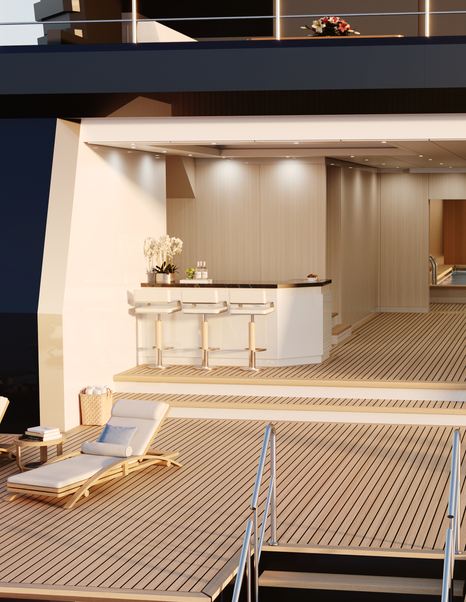
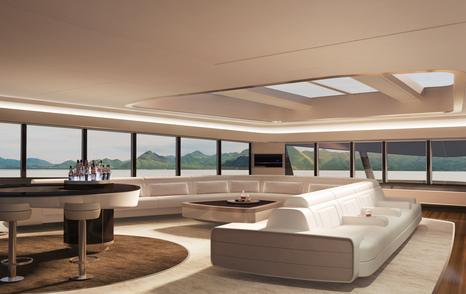
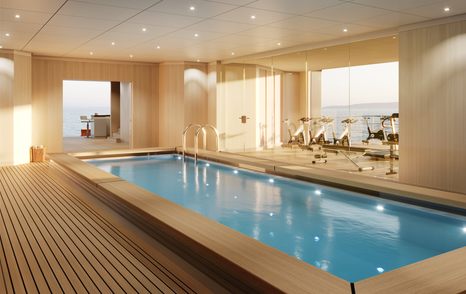
While emphasizing practicality, explorer yacht interiors also feature stylish and modern design elements. Expansive glass areas and windows allow for natural light, offering panoramic views of the surrounding landscapes.
The layout maximizes space utilization, providing ample storage for long-term provisions and equipment needed for onshore explorations. Additionally, these interiors often include comfortable cabins with well-appointed amenities, ensuring a restful retreat for passengers and crew during extended stays at sea.
Explorer Yacht Performance
When it comes to performance, expedition yachts are more about delivering thousands of nautical miles at consistent speeds, rather than higher speeds and less distance. These vessels are often equipped with a pair of heavy-duty diesel engines (from builders such as MAN, CAT, and MTU) and specially designed propellers and stabilizers to deliver excellent fuel efficiency.
With fuel capacities in the hundreds of thousands of liters, explorer vessels can travel up to 8,000nm at a cruising speed of 12 knots (Damen SeaXplorer 105).
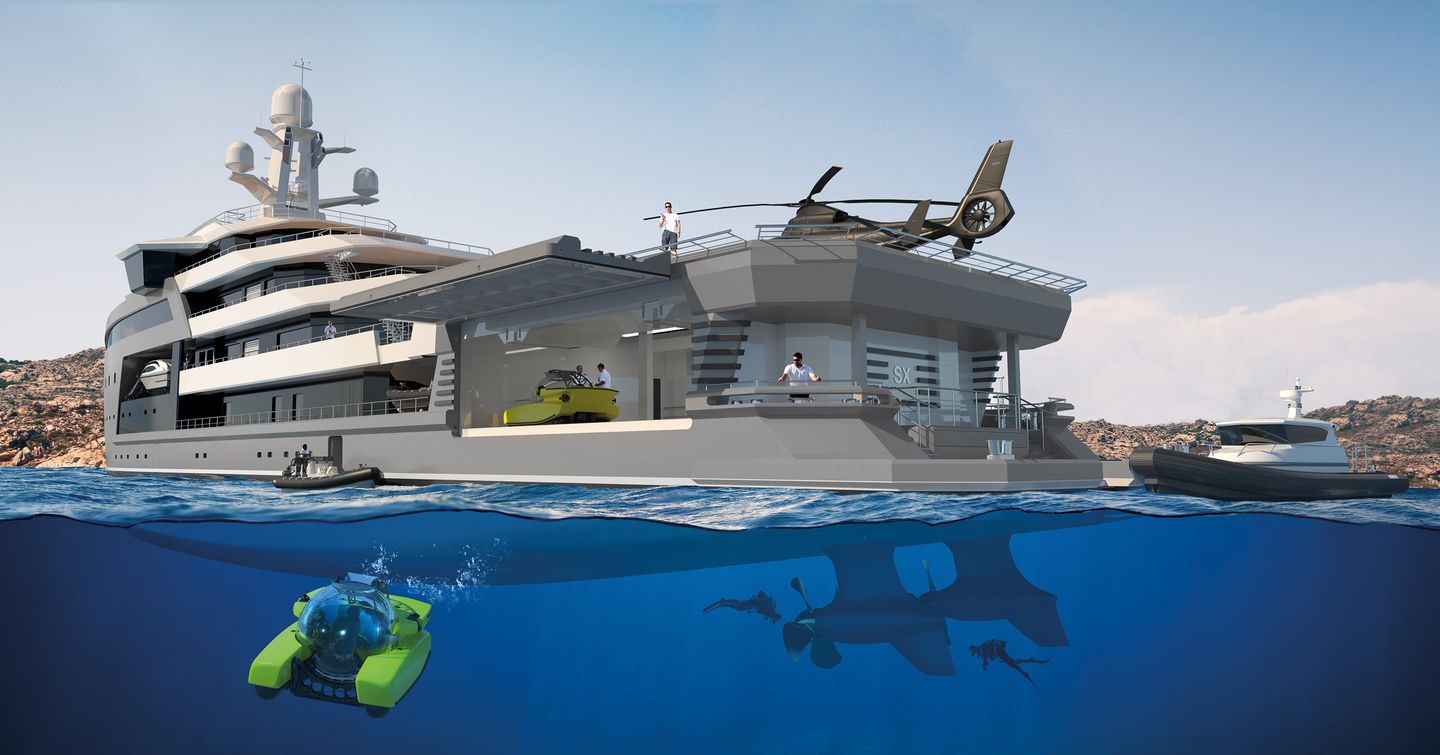
REV Ocean - The World's Largest Explorer Yacht
REV Ocean, an explorer yacht due to be delivered in 2024 will become the largest of its type ever built, standing at a length of 182.9m (600ft). The vessel will be capable of carrying 106 people, consisting of scientists, crew, and guests.
Onboard there will be 93m³ of fridge space, 76m³ of freezers, and over 400 tons of drinking water, enabling the vessel to provide for everyone aboard for up to 114 days.
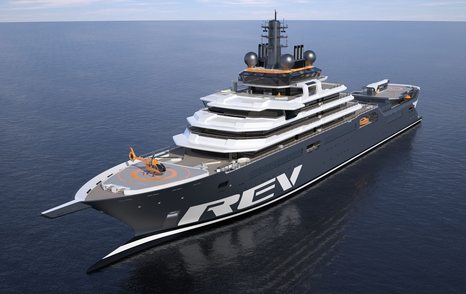
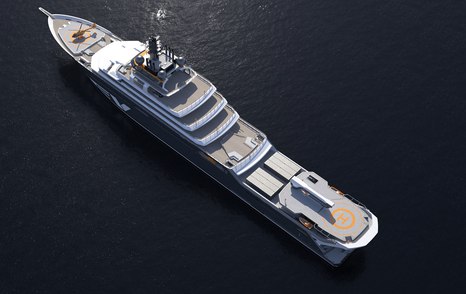
Technical Characteristics of Expedition Yachts
- Style: Rugged exterior to deliver a high level of seaworthiness, combined with an inviting, yet practical interior to ensure a warm welcome back onboard when cruising in cold climates.
- Layout: Large, uncluttered deck spaces with ample storage for equipment, tenders, and toys. The vessel type can also feature a helipad.
- Range: Long-range capability (up to 30,000nm+)
- Cruising Speed: 10-12+ knots
Summary: Exploring the Explorer Yachts
| Feature | Description |
|---|---|
| Definition | Explorer (expedition) yachts are ocean-going vessels designed for long-range, remote-region travel |
| Typical Size | Generally range from 40–100 m, though both smaller and larger vessels exist |
| Hull Design | Full-displacement hulls with deep drafts, often ice-class compliant (Polar Code B) for polar travel |
| Range & Autonomy | Fuel capacity for 5,000+ nm at ~10 knots; some equipped for 30–40+ days offshore |
| Provisions & Energy | Large storage for food, water, spares; energy systems may include solar, wind, hybrid engines |
| Performance | Cruising speeds of 10–12 knots; top speed up to 15 knots, with robust propulsion systems |
| Notable Examples | REV Ocean (195 m), Andromeda (107 m), Silver Endeavour (Polar Class PC6) |
Looking for Expedition Yachts for Sale?
Feeling the urge to explore? Start with our curated selection of listings of explorer yachts for sale—each one carefully vetted for authenticity, build quality, and operational history. Whether you're searching for a performance cruiser, a long-range expedition yacht, or a proven charter vessel, YachtBuyer platform connects serious buyers with reliable options from established builders. Start your search with confidence—every yacht we feature meets our standards for transparency and accuracy.
